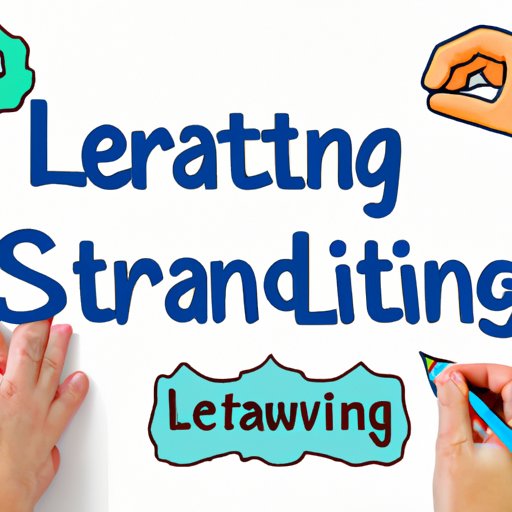
Introduction
Have you ever found yourself struggling to learn something new, despite putting in a great deal of effort? Learning is an essential process in both academic and professional pursuits, yet it can prove challenging for many individuals. However, there are several strategies you can adopt to become a more effective learner and enhance your ability to retain new information. In this article, we’ll explore five evidence-based strategies for successful learning and provide practical tips for implementation.
Break down the learning process
Learning a new skill or subject can be overwhelming, especially when presented with a large amount of new information all at once. This is why it’s often helpful to break the learning process down into smaller, more manageable steps. By segmenting your goals, you can track your progress and feel a sense of accomplishment as you complete each step, which can keep you motivated to continue learning.
For example, if you’re trying to learn a complex concept, you could start by breaking it down into its individual parts, and then tackle each part one at a time. This approach has been shown to enhance retention and recall of information, as it gives the brain time to fully process and integrate new material into existing knowledge.
Emphasize learning-by-doing
Learning-by-doing, also known as experiential learning, involves active participation and practical application of new information. This method allows individuals to engage with the material at a deeper level, as it provides context and relevance to the concepts being learned.
When possible, try to incorporate hands-on activities in your learning process. For instance, if you’re studying a new language, you could practice speaking with native speakers, or if you’re learning a musical instrument, you could attend jam sessions with other musicians.
Research has shown that learning-by-doing is an effective method of learning in a variety of fields, such as medicine, engineering, and the arts.
Integration of technology
The integration of technology into the learning process has become increasingly popular in recent years. Edtech tools, such as educational apps, interactive simulations, and video tutorials, can enhance the learning experience and provide a more engaging and personalized approach to learning.
For example, language learning apps like Duolingo and Babbel offer interactive and personalized language lessons that adapt to your learning style and level. These tools have been shown to be effective in improving language proficiency compared to traditional classroom learning.
Collaborative learning
Collaborative learning involves working with others on a shared task, such as a group project or brainstorming session. This strategy encourages the exchange of ideas and perspectives, which can lead to a deeper understanding of the material being learned.
When forming a study group or working on a team project, consider working with individuals who have different strengths and backgrounds to maximize learning opportunities. Research has shown that collaborative learning is particularly beneficial for students in STEM fields who often have to solve complex problems that require a multidisciplinary approach.
Personalize the learning experience
Personalizing the learning experience involves tailoring learning activities to meet individual needs and interests. Everyone has different learning styles, strengths, and weaknesses, and accommodating these differences can enhance the learning process.
For example, if you’re a visual learner, you could use diagrams, charts, and images to help you understand new information. If you’re an auditory learner, you could use podcasts, audiobooks, or music to help you retain information.
Personalizing the learning experience can also involve aligning learning objectives with personal goals. For example, if you’re learning a new skill for a particular job, you could focus on acquiring the specific knowledge and abilities needed for that role.
Reflection and feedback
Reflection and feedback are important components of the learning process. Self-reflection can help individuals identify areas for improvement and monitor their progress towards learning goals. Feedback from others can provide valuable insights into areas where improvements can be made.
It’s important to set aside time for self-reflection and seek feedback from mentors, instructors, or peers. Additionally, regular self-assessment and goal-setting can help keep you motivated and on track towards achieving your learning objectives.
Conclusion
Effective learning requires commitment, effort, and a willingness to try new strategies. By breaking down the learning process, emphasizing learning-by-doing, integrating technology, promoting collaborative learning, personalizing the learning experience, and incorporating reflection and feedback, you can become a more successful learner.
Remember, there’s no one-size-fits-all approach to learning. Experiment with different strategies and find what works best for you.





